I hope you all had an awesome holiday break. Today, I wanted to share my Christmas gift to myself this year, a camera jacket!
I was inspired by a very stylish camera wrap featured at Craft a couple of weeks ago. It was so handsome, I had to try my hand at making one for myself.
I followed the featured wrap’s directions and came up with the following for my Canon t3i.
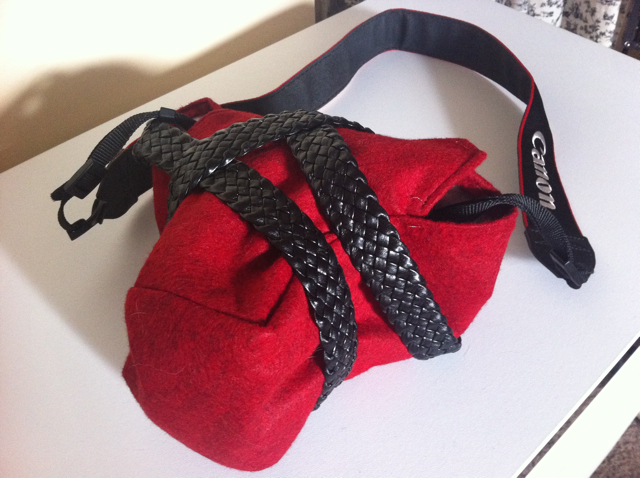
For my particular camera and its medium length lens, I felt like the above design was a little too bulky. I decided my needs would be better suited with a more compact wrap, or jacket as I like to think of it.
Supplies
1/4 yd. vinyl
1/2 yd. of felt in one color
another 1/2 yd. of felt in another color
1 yd. fusible interfacing
freezer paper
pencil
tape measure
camera
iron
fabric scissors
straight pins
sewing needle
sewing machine
3 rivets
mallet
1 set of fabric snaps
Directions
Trace the outline of your camera onto a piece of fabric paper twice. Measure the length of perimeter of your camera (wrap your tape measure around your camera to see how many inches around it is). Then, measure the height of your camera. Draw a rectangle on some freezer paper using these measurements, with some added seam allowance. My camera was 21 inches around and 4 inches high, so my rectangle was 21.5 by 4.5 inches.
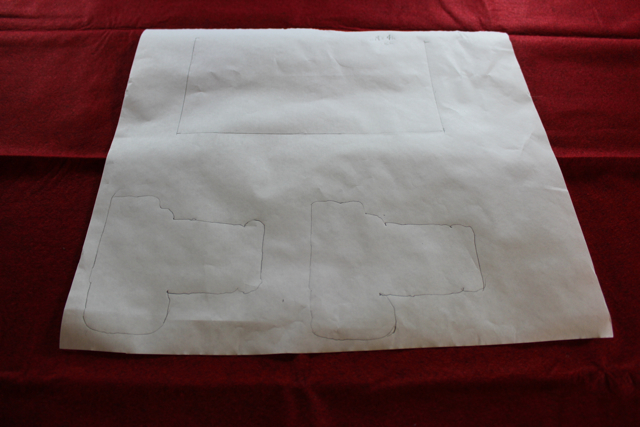
Cut out each pattern piece. Iron one camera silhouette and the rectangle to the right side of your felt. Iron the other camera piece to the wrong side of your felt.
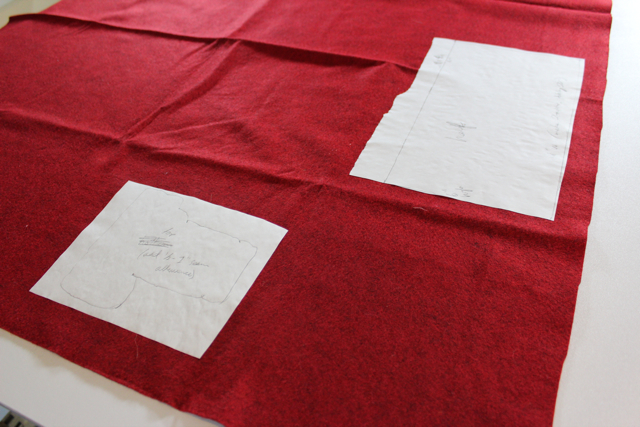
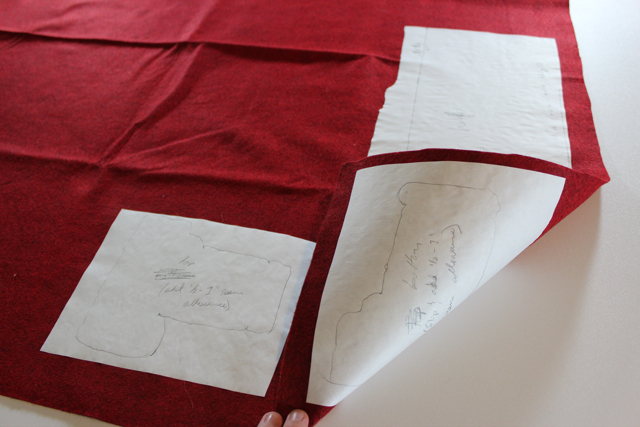
Cut out the rectangle as you’ve drawn it, and cut out the camera silhouettes, leaving 1/2″ of seam allowance. Leave the freezer paper ironed to the felt for the time being. This will help you keep track of which camera silhouette is which.
Next, cut out a piece of fusible interfacing for each felt piece and iron them each piece of felt you cut out. The two pieces of felt whose patterns were ironed to the right side of the felt should have the interfacing ironed to the wrong side of the felt, and I recommend still leaving  the freezer paper in place. For the other camera silhouette piece, remove its pattern from it and set aside. Iron the fusible interfacing to the wrong side of that felt, i.e. the side you just removed the pattern piece from.
Basically, the reason you need to do this whole song and dance is because one of the camera silhouettes will be the top of the case, and one will be the bottom. When the interfacing is attached, the silhouettes will be mirror images of each other.
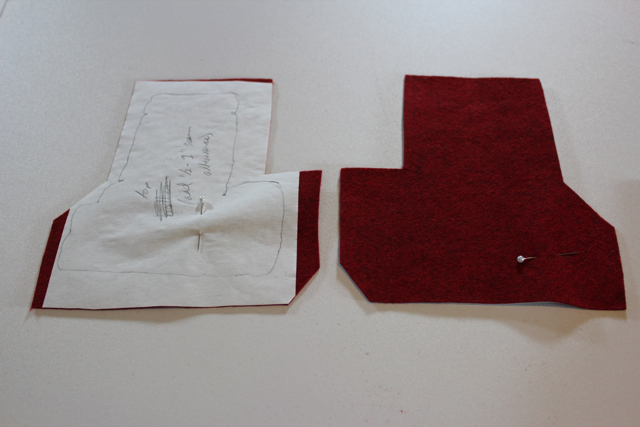
The photo above shows the camera silhouette pattern I used in the design of the first camera bag I attempted to make. In my second attempt, I oped to make my pattern piece curved, rather than angular (see below). My husband actually suggested that design change – if the camera you’re making this wrap for has a lens any longer than a couple of inches, the angular pattern I tried ends up looking like a lumpy snake head.
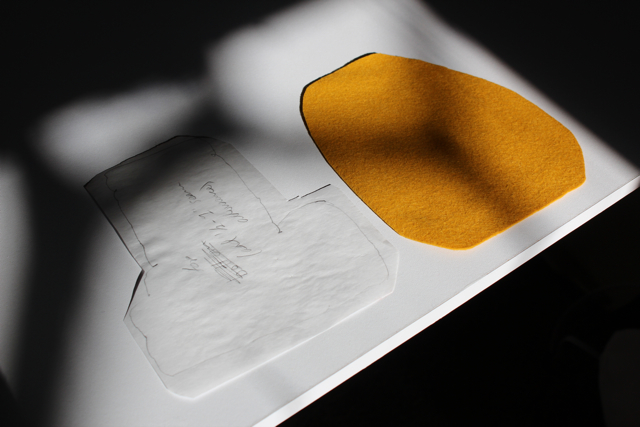
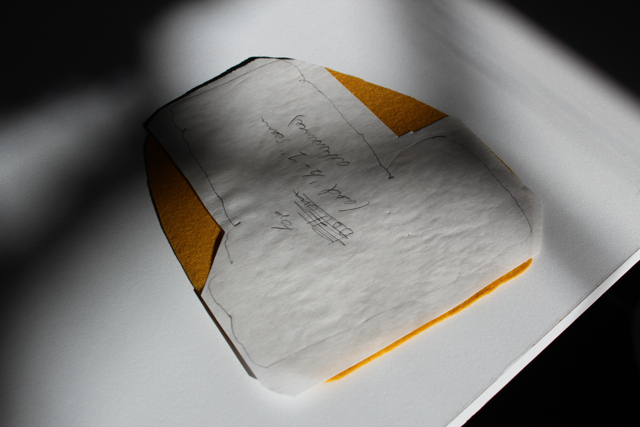
When your interfacing is properly fused, cut out a second set of felt pieces for your bag. The felt pieces with the interfacing fused to them will be your bag’s liner, and the second set will be the outside. Since I’m a waste not, want not type of gal, I used leftover angular (red) felt pieces as my bag’s liner.Â
Using a basting stitch, attach your liner pieces to the outside pieces. Sew one silhouette piece to the large rectangle, and then another, keeping the two silhouettes lined up to avoid a crooked bag. Leave the non-lens end of the bag open.
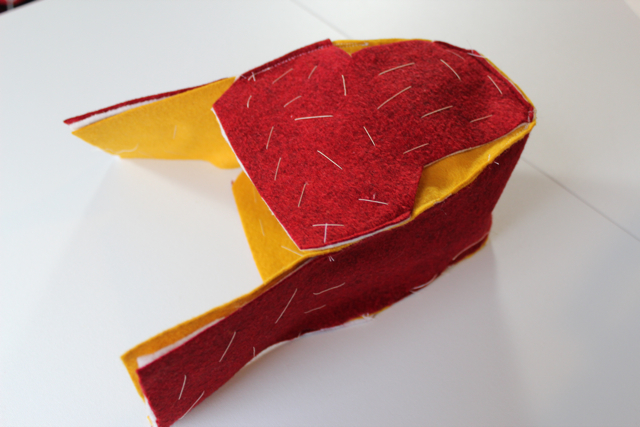
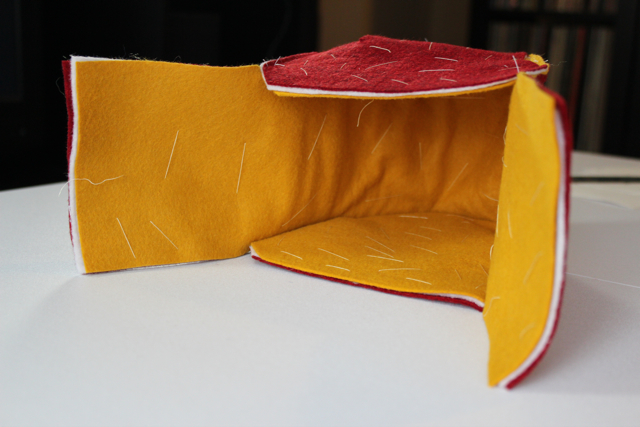
Fold the out and inside felt layers inward and sew down, all the way around both flaps and the back end of the top and bottom silhouette pieces.
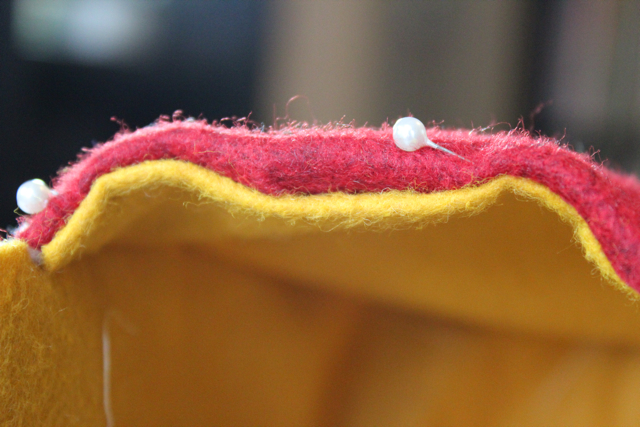
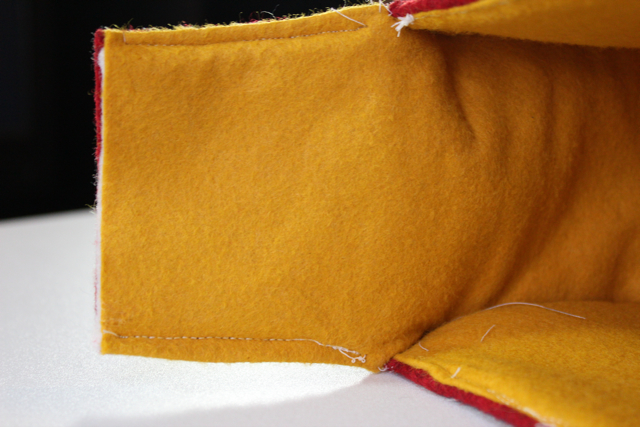
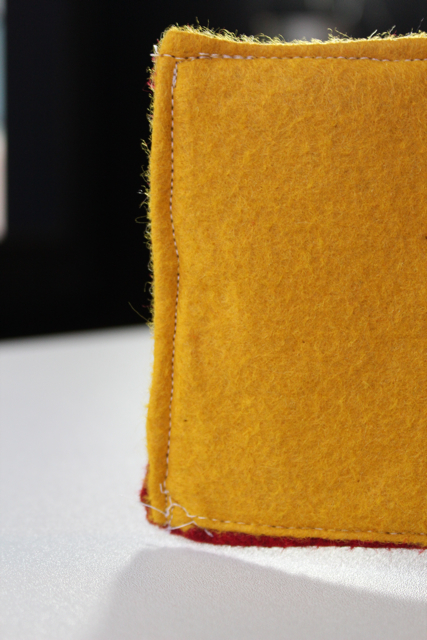
Making the straps
Cut two rectangles of vinyl out, 2 inches wide by 1/2 inch shorter than your camera’s height. Fold the vinyl as shown, and hand sew each piece together.
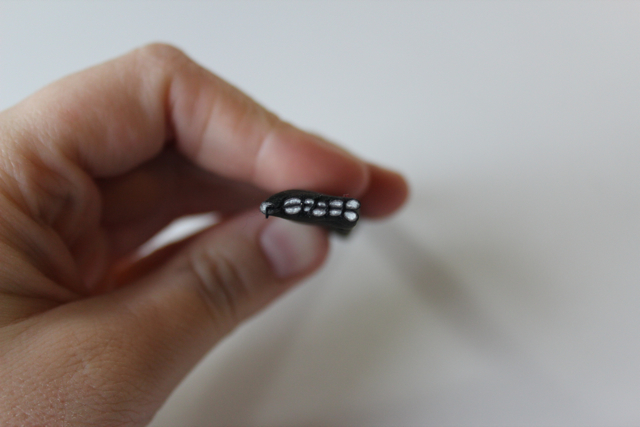
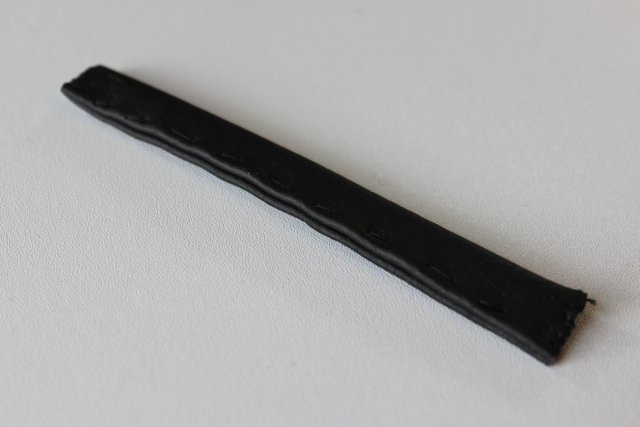
It’s hammer time!
Grab your mallet, rivets and snaps. Follow the directions provided with your rivets and snaps. Attach one vinyl strap at two points on one flap with rivets. Attach the other strap at one point with a rivet, and at the other point with a snap. Follow the package directions for attaching the snaps too.

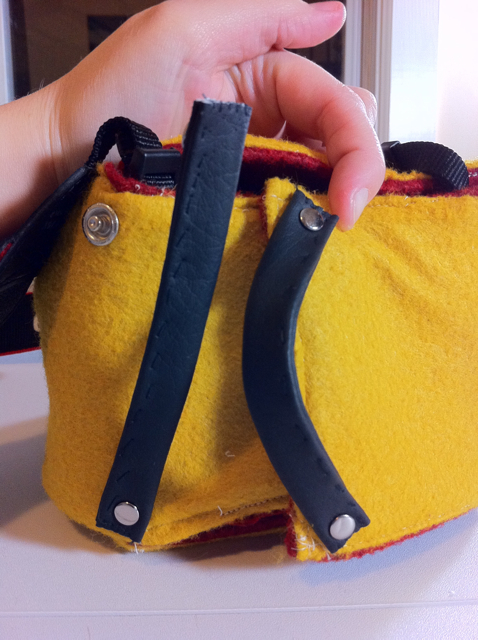
You’re done! I also sealed my wrap with Scotch Guard to help waterproof it, but I’m really happy with how it turned out. Can you see now why I decided to call it a jacket? It keeps my camera safe from the elements – snow and water, dicks on the train, etc.
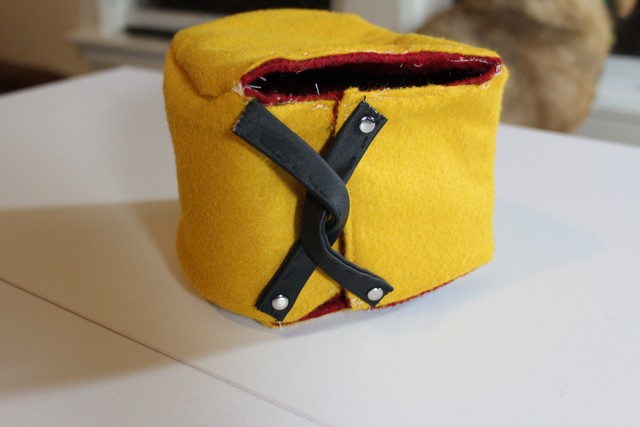
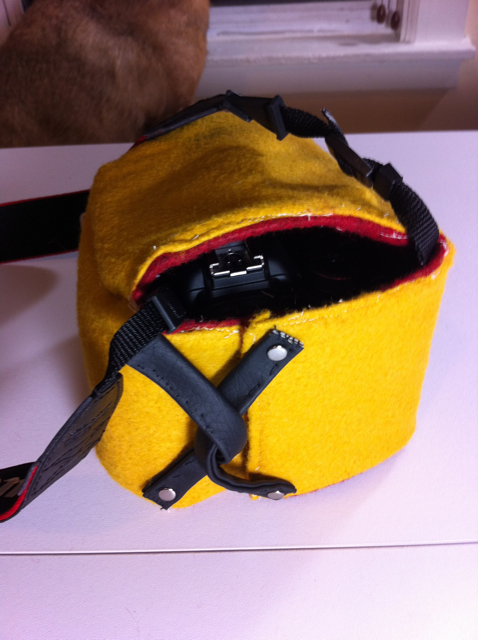
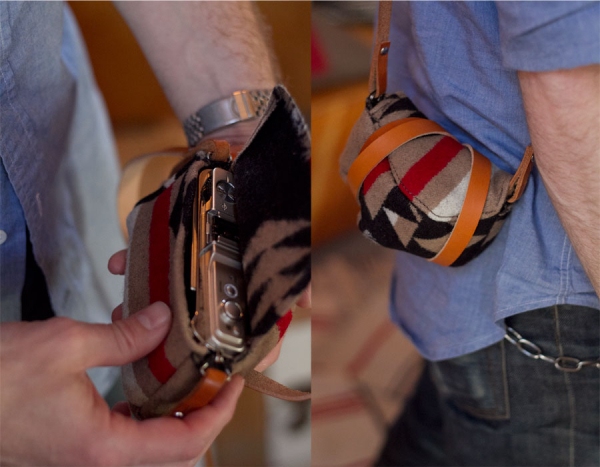
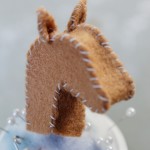


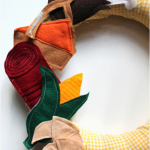


Leave a Reply